Fourteen fish have big, blubbery lips aiding them in consuming certain foods. I like to think that most of these fish named have Hollywood-type lips that are just for show! These creatures named below have big lips to suck up their food whole or defend themselves. Some of these scaly creatures make great companions in your home, while others are great for admiring in the ocean. Check out the fourteen creatures with the perfect lip jobs!
1. Koi
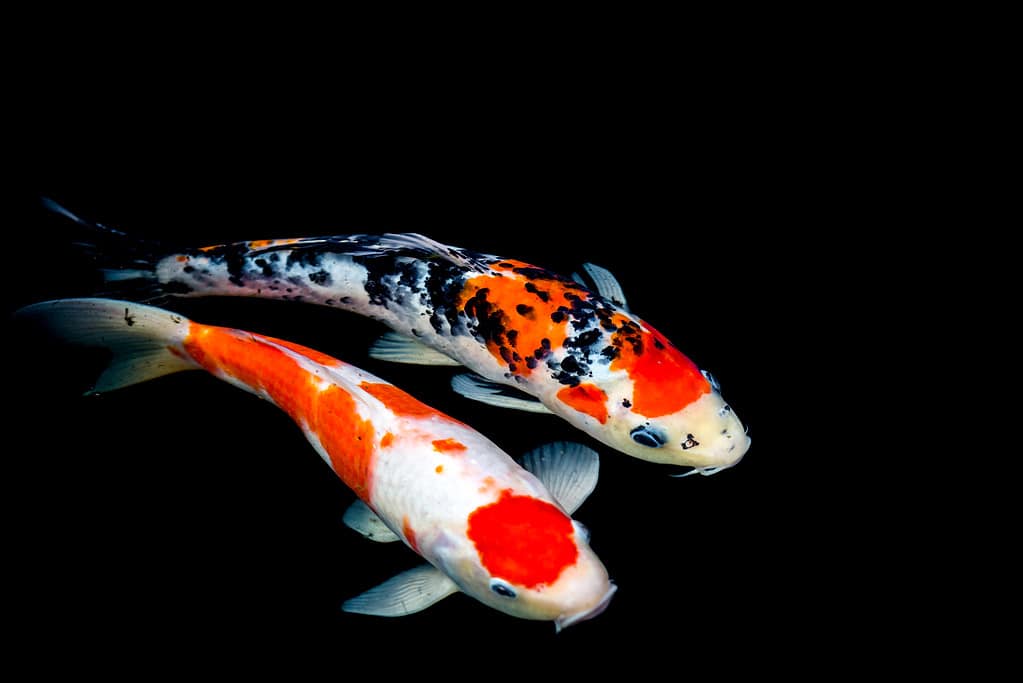
The Koi is also known as the Japanese Koi or Nishikigoi, meaning swimming jewel.
©Jerawat Supajirakit/iStock / Getty Images Plus via Getty Images
Koi fish are native to East Asia but are found in North America, Europe, and Australia. This freshwater fish loves to beg for food by opening and closing their big lips! This type of fish can exceed six feet long, so an outdoor pond is recommended. Koi can live up to forty years, so you will indeed have a scaly friend for life. Koi’s have pressure sensors over their mouths and lips, allowing them to eat their food a certain way since they are bottom feeders.
2. Sweetlips

They are also called Grunts because they can produce loud grunting sounds by rubbing their pharyngeal teeth together!
©johnandersonphoto/iStock / Getty Images Plus via Getty Images
What an interesting name for a big-lip fish! Sweetlips can grow over three feet long and thrive in groups of four or more. If you are considering getting this fish in your aquarium, they prefer their environment to be dimly lit and caves to hide in. These creatures are inactive during the day and feed on open sandy bottoms. Sweetlips are a peaceful species and will do well with other fish in their space. This saltwater fish lives in the Atlantic, Indian, and Pacific waters. Their large lips allow them to eat crustaceans. Because of their thick, blubbery lips, they are called sweetlips.
3. Carp
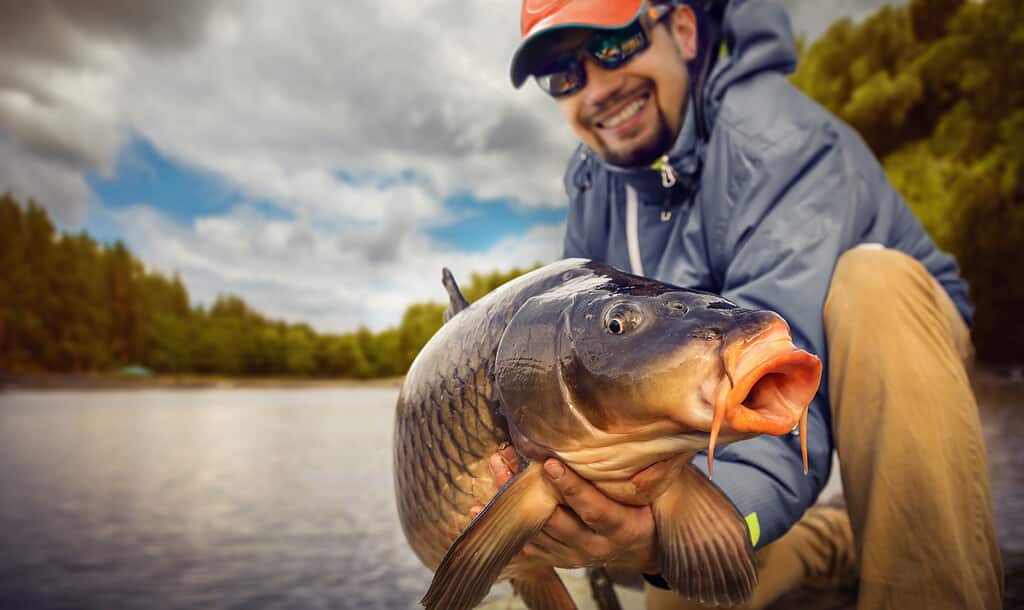
The average size of carp is fourteen inches long but can grow over thirty-nine inches!
©mel-nik/iStock / Getty Images Plus via Getty Images
Carp are a greenish-brown fish native to Eurasia. During the winter, carp become torpid and retire to the bottom of a lake or pond. In captivity, these fish can live more than forty years! Their giant mouths allow them to suck in food or objects at the bottom of the lake. Because of their enormous mouths, they can eat small crustaceans and fish. These creatures often hang out around weedy bottoms of lakes, ponds, and rivers.
4. Napoleon Wrasse
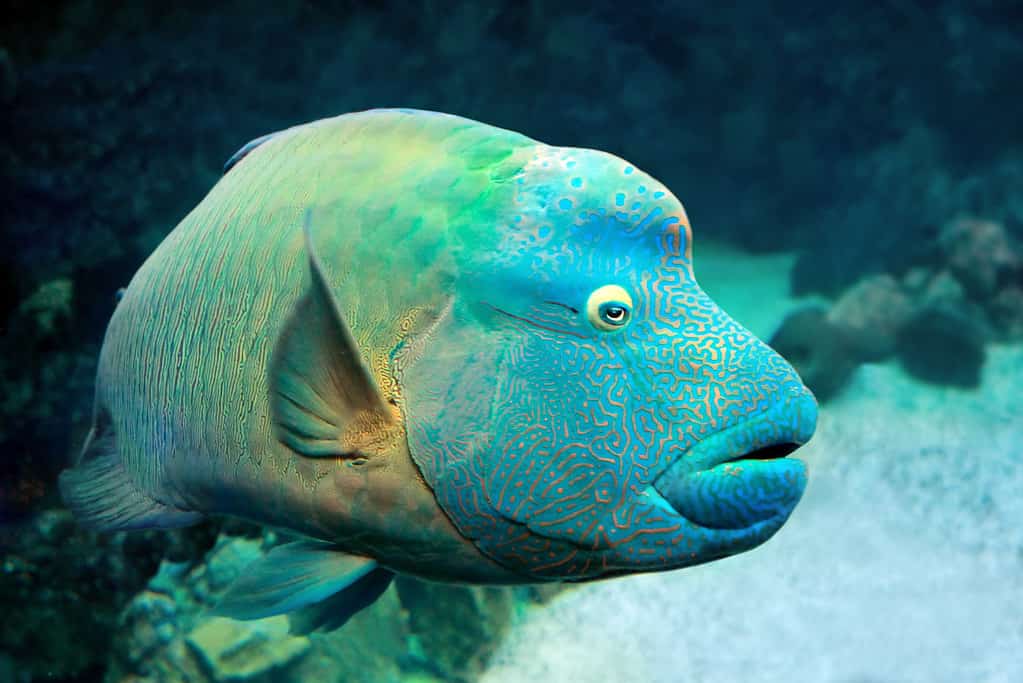
Fun Fact: Napoleon Wrasse has excellent vision and can turn their eyes 360 degrees!
©TatianaMironenko/iStock / Getty Images Plus via Getty Images
Napoleon Wrasse lives in the warm waters of the Pacific and Indian ocean. They hang out around lagoon reefs and steep outer reef slopes. These fish are very friendly but, unfortunately, would not fit in an average at-home aquarium since they can grow over four hundred pounds and reach over seven feet long. These large-lip fish are carnivores eating shellfish and sea stars. Napoleon Wrasse fish can eat toxic fish such as boxfish and seahorses. This large creature obtained its name because the hump on its head resembles the hat of French emperor Napoleon Bonaparte.
5. Giant Grouper

Fun Fact: The Giant Grouper has seven rows of teeth and, similar to the Napoleon Wrasse, can rotate their eyes!
©pniesen/iStock / Getty Images Plus via Getty Images
The Giant Grouper is a large reef-dwelling fish living in the Indo-Pacific Ocean. This giant fish can grow over nine feet long and weigh over eight hundred pounds. Giant Groupers can expand their large lips to suction in their prey whole! Their diet consists of spiny lobsters, reef fish, tiny sea turtles, and small sharks. These creatures patrol slowly close to the bottom of the ocean for their food. They also will feed at dawn or dusk because their eyesight is not the greatest.
6. Stonefish

This interesting-looking fish can survive twenty-four hours out of water by absorbing oxygen in the skin.
©Alberto Carrera/iStock / Getty Images Plus via Getty Images
The Stonefish is one creature to look out for if swimming in the ocean. If you step on one, get treatment as soon as possible because they are venomous. Stonefish carry their venom in their thirteen spines. This bottom-dwelling fish lives among rocks and coral. This creature’s large lips allow them to apply enough pressure to suck up their prey. They consume other reef fish and will sit and wait for their prey to swim by. Stonefish grow up to forty centimeters and weigh five pounds.
7. Sarcastic Fringehead

The Sarcastic Fringehead has a six-year lifespan and weighs three hundred grams.
©Natalie Ruffing/iStock / Getty Images Plus via Getty Images
The Sarcastic Fringehead is one territorial and aggressive fish that should not be messed with! The female Sarcastic Fringehead will lay the eggs in the male habitat, and the male will protect the babies with his life. This fish has a large mouth and lips that can extend past their eyes! During a face-off with another male Sarcastic Fringehead, they will slam their large open mouths into each other to assert dominance. The word Sarcastic originates from the Greek word “Sarkazein,” meaning to tear flesh. This is a fitting name for this creature.
8. Big-Lip Damselfish
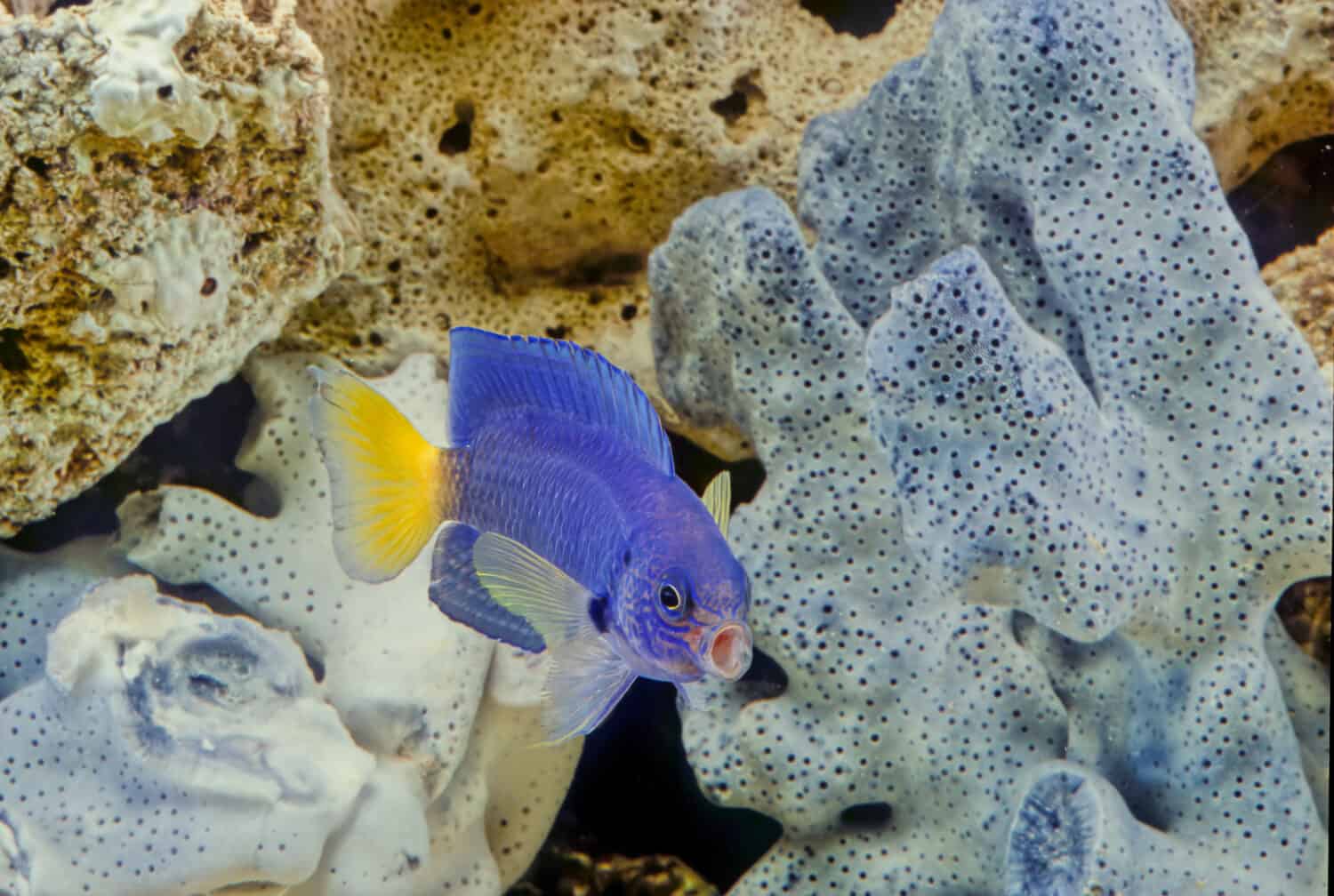
This beautiful fish has what we call “Hollywood Lips!”
©Roberto Dani/Shutterstock.com
The Big-Lip Damselfish is a ray-finned creature of the Pomacentridae family. They live in eastern India and the Southwest part of the Pacific Ocean. The Big-lip Damselfish feeds on the tentacles of the polyps of Acropora Corals.
9. Piranha
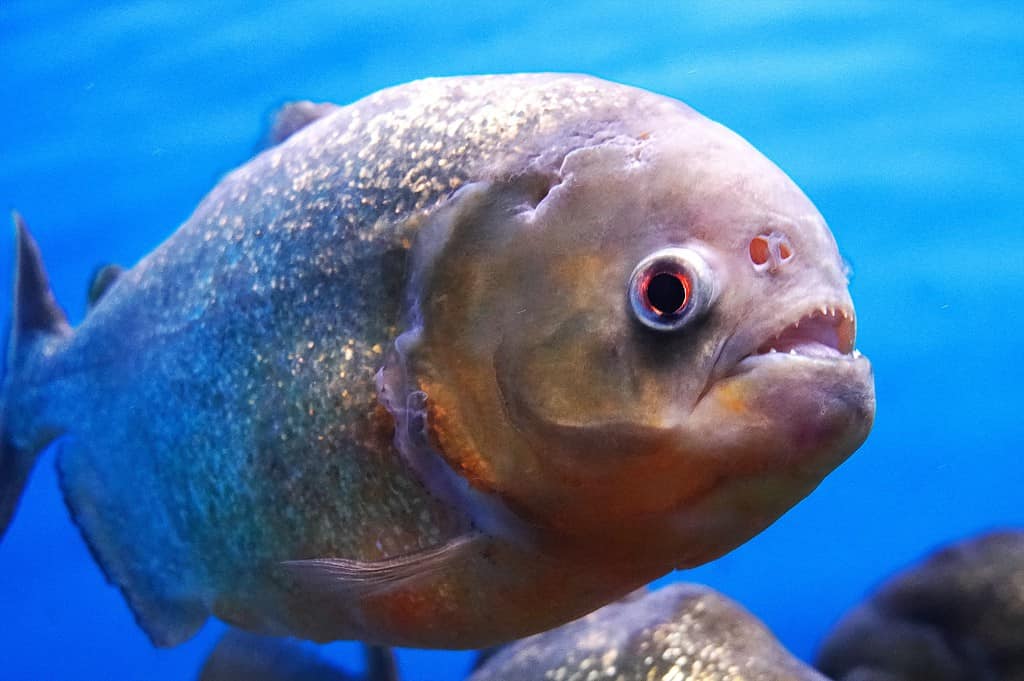
In Brazil, of the Tupi people, piranha means tooth.
©kata716/iStock / Getty Images Plus via Getty Images
An interesting fact about Piranhas is that many are carnivorous, but some are vegetarian. Two species of Piranhas, Pygocentrus, and Serrasalmus, make good fish for an aquarium (you may have seen these species at the aquarium with other fish in the tank). Before adding a piranha to your home, ensure it is legal in your state. The diet of piranhas consists of other fish, shrimp, crustaceans, seeds, or vegetation. This fish is native to South America.
10. Giant Gourami
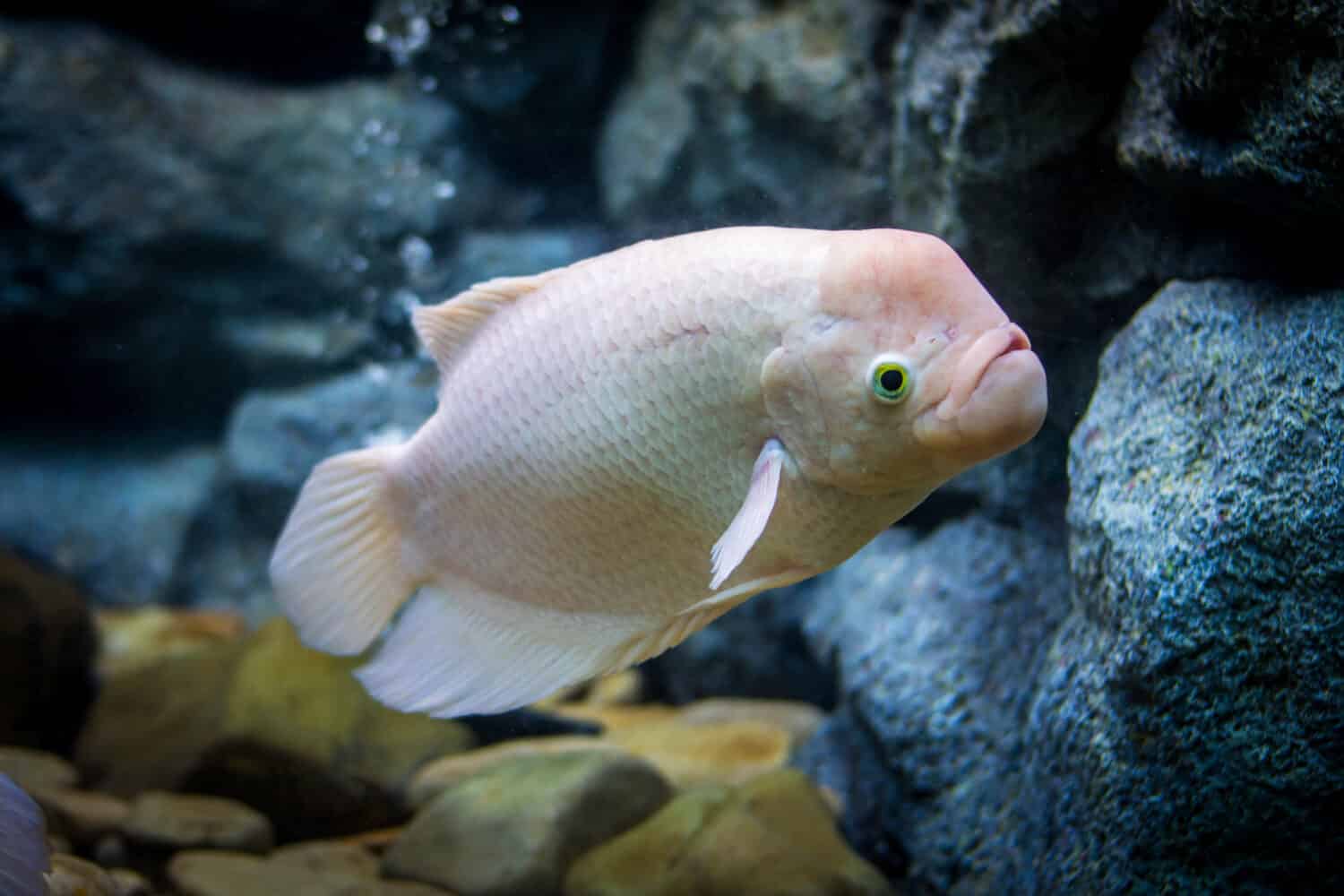
Giant Gouramis have a lifespan of up to five years; however, in captivity, they can live much longer.
©Watcharin Tadsana/Shutterstock.com
The Giant Gourami is the largest of the Gourami family. This fish lives in large rivers, lakes, marshlands, and swamp canals. If you decide to get this fish, have an aquarium with over two hundred gallons of water. This friendly freshwater fish can breathe air, so you may see your new friend pop its head out occasionally to say hello! The diet of the Giant Gourami includes algae, crustaceans, fish, worms, frogs, and even dead animals.
11. Angelfish
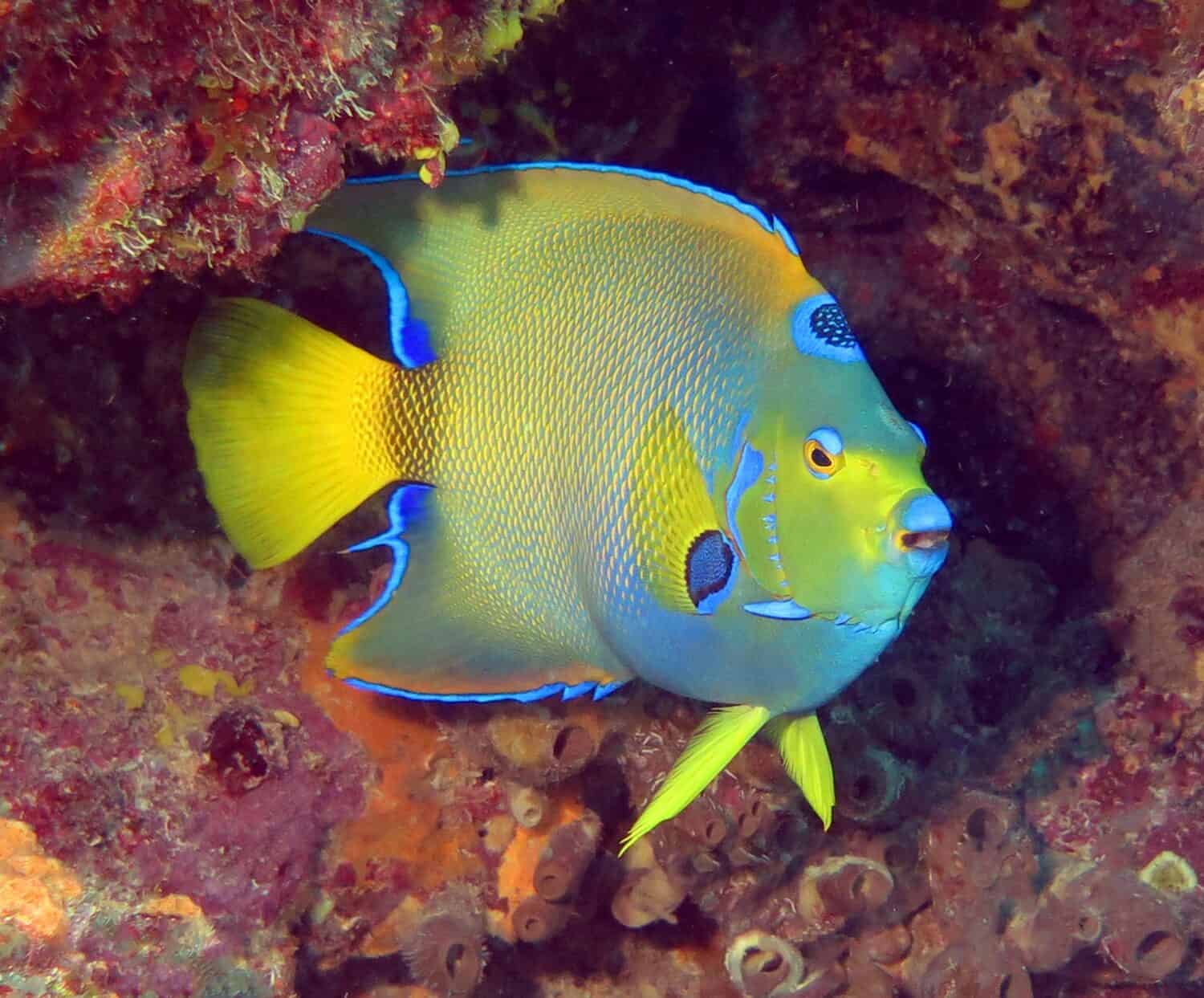
Although small, the large lips of the Angelfish allow them to have the type of diet they have.
©Daryl Duda/Shutterstock.com
Angelfish are omnivores consuming small crustaceans, worms, insects, larvae, and plants. There are two types of Angelfish living in different parts of the world. The Marine Angelfish lives in the warm Indian, Atlantic, and western Pacific oceans. The Freshwater Angelfish live in South America in river basins.
12. Triggerfish
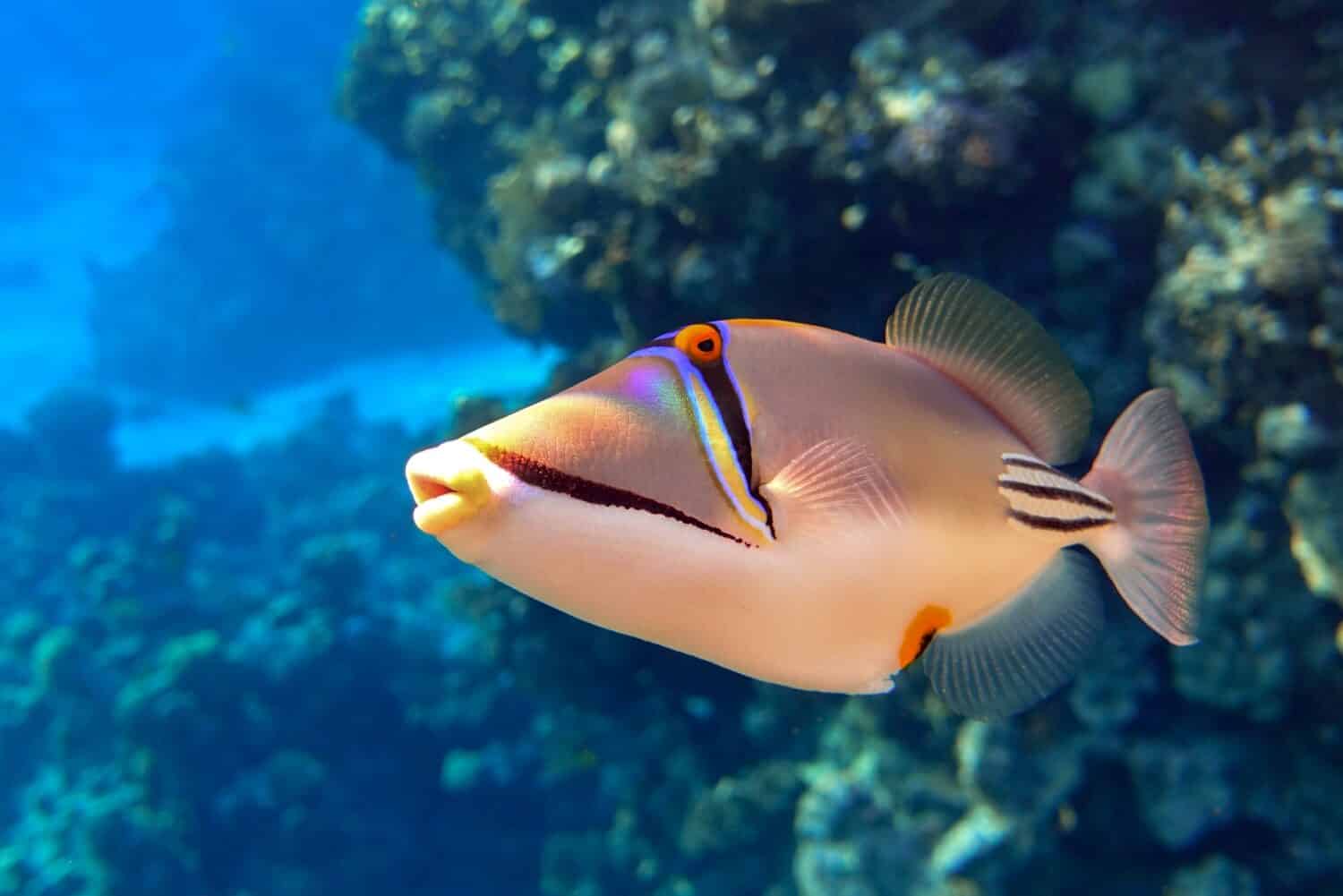
Triggerfish live in tropical and subtropical waters.
©Miroslav Halama/Shutterstock.com
The Triggerfish is a bottom-dwelling fish that digs out their prey using their fins to flap debris away. They also will use their plump lips to squirt water from their mouths! Triggerfish also have teeth so that they can eat crabs and worms.
13. Common Pleco

This cool-looking fish can live up to thirty hours out of water!
©Joan Carles Juarez/Shutterstock.com
Common Pleco are omnivores that eat plants, algae, insects, and small crustaceans. These fish are also known as sucker fish, given their large lips. They live in South American waters and the brackish waters of Costa Rica. It is recommended to have a one-hundred-gallon tank to keep up with the Common Pleco size. These creatures can live up to fifteen years in captivity, so take good care of them!
14. Red Snapper
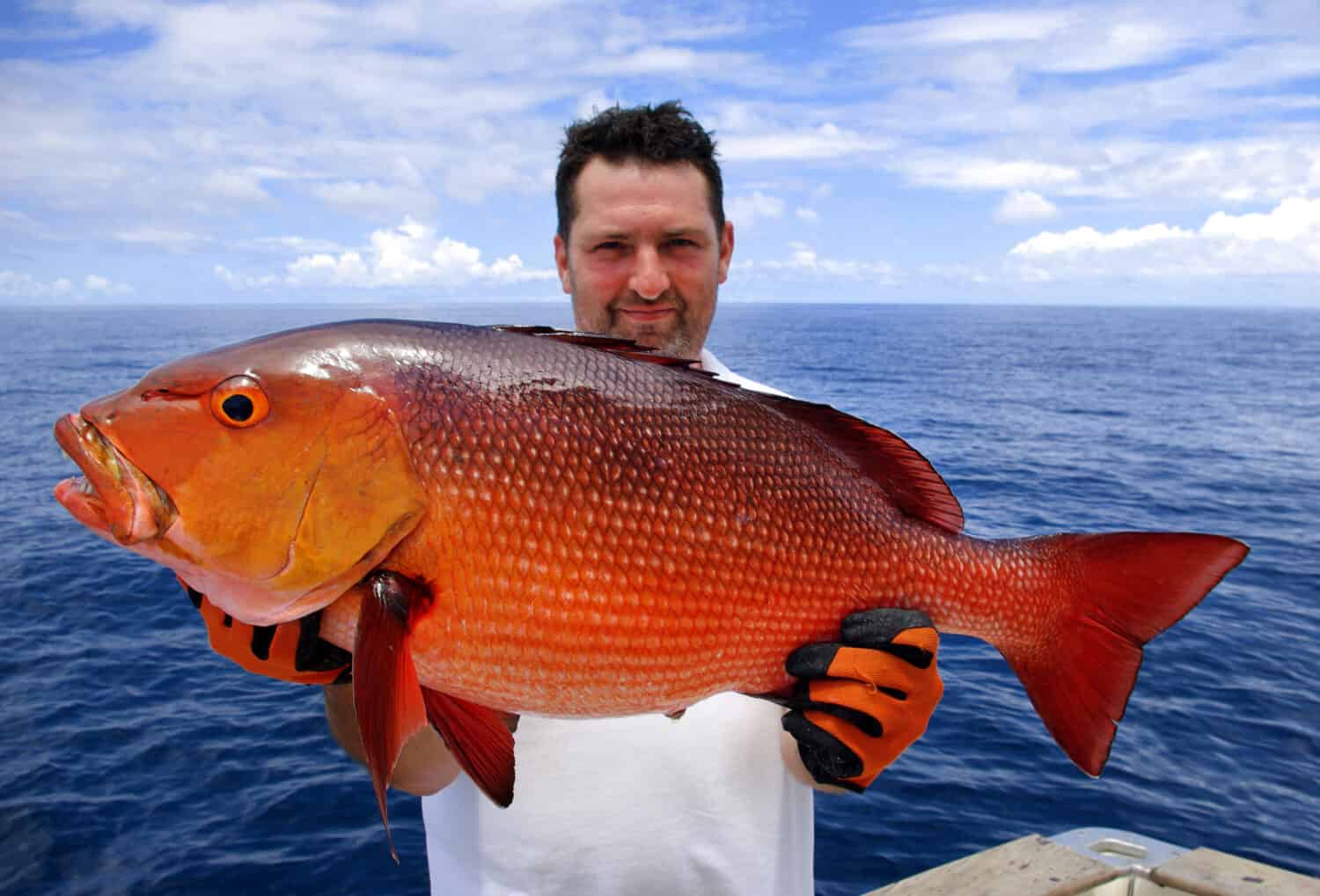
The Red Snapper’s scientific name is Lutjanus Gibbus.
©Fabien Monteil/Shutterstock.com
The Red Snapper have large lips that help them consume crustaceans, cephalopods, and fish. They live in coral reefs of the Indo-West Pacific tropical waters. Red Snappers can grow up to eight pounds and are fifty centimeters long. This fascinating creature has a life span of ten years.
| 14 Fish With Big Lips! |
| 1. Koi |
| 2. Sweetlips |
| 3. Carp |
| 4. Napoleon Wrasse |
| 5. Giant Grouper |
| 6. Stonefish |
| 7. Sarcastic Fringehead |
| 8. Big-Lip Damselfish |
| 9. Piranha |
| 10. Giant Gourami |
| 11. Angelfish |
| 12. Triggerfish |
| 13. Common Pleco |
| 14. Red Snapper |
The photo featured at the top of this post is © Supermop/Shutterstock.com
Thank you for reading! Have some feedback for us? Contact the AZ Animals editorial team.






